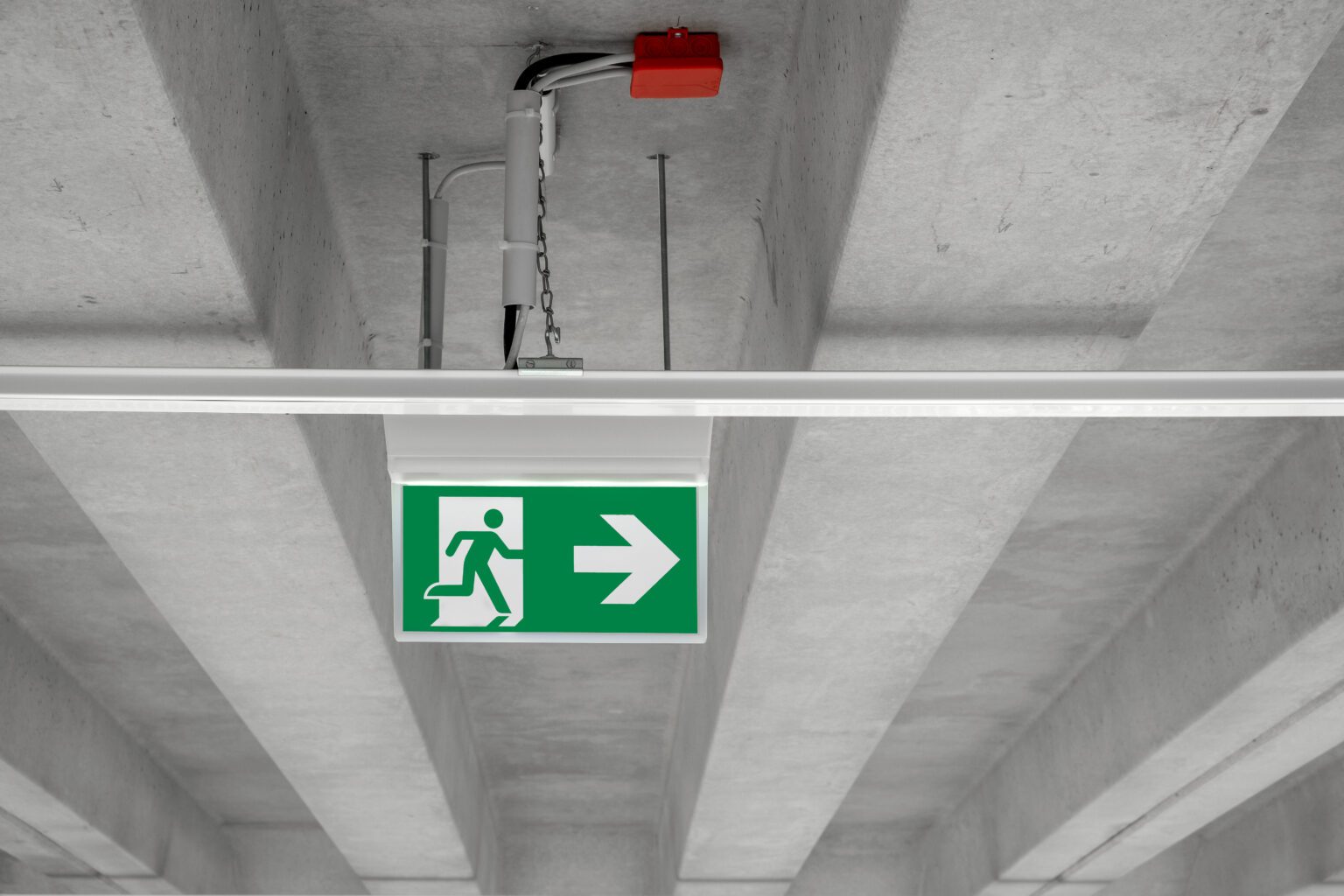Emergency and safety lighting is an essential part of the design of workplaces and helps to enable people to leave buildings safely in the event of a power failure or other hazardous situations. The installation of these lighting systems is one of the employer's obligations and the inspection of emergency lighting must be carried out by a qualified person. What are the different aspects of emergency and safety lighting and the associated requirements and obligations?
Definition: Safety lighting
Safety lighting is part of the emergency lighting that is intended to enable people to leave a building or room safely in the event of a failure or partial failure of the general power supply. The employer is obliged to provide safety lighting in accordance with the provisions of building law and occupational health and safety law.
Difference between safety lighting and emergency lighting
Emergency lighting is a generic term that covers both safety lighting and replacement lighting. It is intended to enable people to leave rooms safely if the general artificial lighting fails and is operated independently of the general power supply.
Important functions of emergency lighting in an emergency:
Lighting of escape routes
Illumination of escape signs
Locating fire protection and safety equipment (e.g. first aid rooms)
Emergency and safety lighting: mandatory?
The requirements for safety lighting are described in various regulations and can vary depending on the state building regulations, planning permission and fire safety reports. In addition, employers are obliged under the Occupational Health and Safety Act to set up and operate workplaces in such a way that the safety and health of employees are not jeopardised.
The photometric requirements for safety lighting are specified in DIN EN 1838, the electrical requirements in DIN EN 60598-2-22. Safety lighting is generally prescribed if it is required under workplace or building regulations.
Risk assessment and instruction of employees
The Occupational Health and Safety Act obliges the employer to carry out a risk assessment of all hazards associated with the work, including safety lighting. They must also instruct their employees on how the safety lighting works and what to do in the event of a fire.
Anti-panic lighting, lighting of escape routes and workplaces with special hazards.
Safety lighting is divided into the following categories:
Anti-panic lightingThis lighting reduces the likelihood of panic and enables employees to reach escape routes safely. Anti-panic lighting is required in large halls, assembly rooms (over 60m2) without escape and rescue routes or smaller areas where panic could occur (e.g. lift cabins).
Safety lighting for escape routes: This lighting enables people to leave rooms safely and provides sufficient visibility and orientation to quickly find extinguishing equipment, for example.
Safety lighting for workplaces with special hazards: This lighting contributes to the safety of people who are in potentially dangerous work processes or situations, e.g. in laboratories, at workplaces without daylight, in electrical operating rooms, on construction sites or in the vicinity of work pits.
Testing the safety lighting - timing and test logbook
The safety lighting must be tested for effectiveness and operational safety by a person authorised to do so. The test must be carried out before initial commissioning, immediately after a technical change to the system and within three years (recurring test).
An inspection log must be kept by a responsible person to document the inspection and must be available for inspection at all times. Among other things, the date of commissioning, inspections, maintenance, faults, remedial measures and changes to the safety lighting system must be entered in the logbook.
